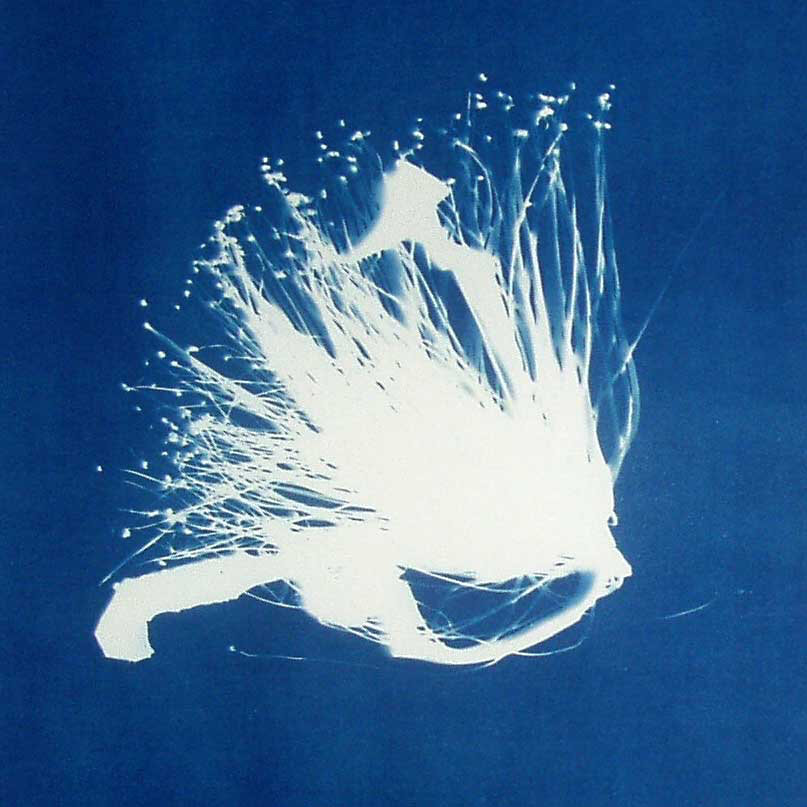
OUT OF THE BLUE
By Don Burmeister
Editor-in-chief of the New York Photo Review
An exhibition at Harmony Hall Gallery, Tower Isle, Jamaica, April 3 – 29, 2011
The deep blue cyanotype prints of H. Lisa Solon seen in “Out of the Blue” carry within them elements of some of the earliest days of photography, combined with some of the most advanced elements of 21st century visual style. Ms Solon has created a vocabulary of shapes that emerge from the creative juxtaposition of natural elements, and that reveal both the beauty of the natural world and the intensity of the artist’s vision.
There are many resonances in H. Lisa Solon’s work. The cyanotype process she uses was one of the first photographic processes invented, and was used to produce what is generally considered to be the first photographic book, a collection of ‘sun-prints’ of seaweed, by the Englishwoman Anna Atkins. Atkins, in fact, went on to record many plants from Jamaica that she obtained from botanic gardens and greenhouses growing these ‘exotics’ in England in the early 19th century.
Although the commercial uses of cyanotype have faded over the years, in recent years artist’s have embraced the process, partly because of the deep blue tones of the prints, but also because of the direct, hands-on nature of the print making process. Making a cyanotype print requires direct physical manipulation of the substrate (the paper or cloth) and, as in H. Lisa Solon’s work, direct preparation and handling of the subject matter as well.
It is in these latter steps that Solon’s prints differ from earlier cyanotypes. The cyanotypes in Out of the Blue are produced by layering plants directly on the substrate, and then, exposing them to the warm Jamaican sun. And in some cases making multiple exposures of the same material. The resulting unique prints take on a wide range of densities and acquire a great depth and presence. We become aware of the print making process, both in a compositional sense (how Solon builds up the images) but also by seeing how the plant material begins to change before our eyes, as it is repeatedly exposed to the sun. Solon, in this set of prints, has been able to maintain the straight-forward honesty of the medium, but has enriched it. Rather than a simple botanical record, she has captured the sun-dappled richness of the Jamaican ‘bush’ itself.